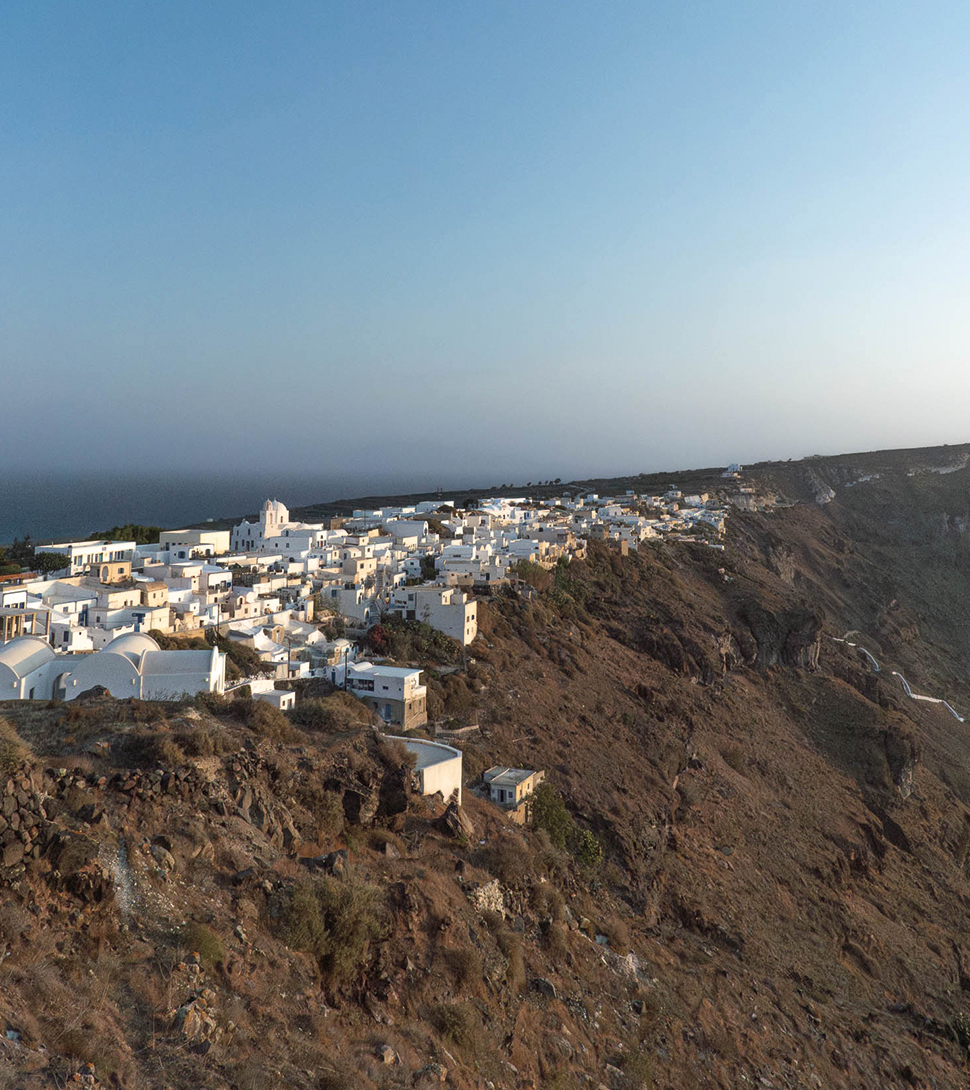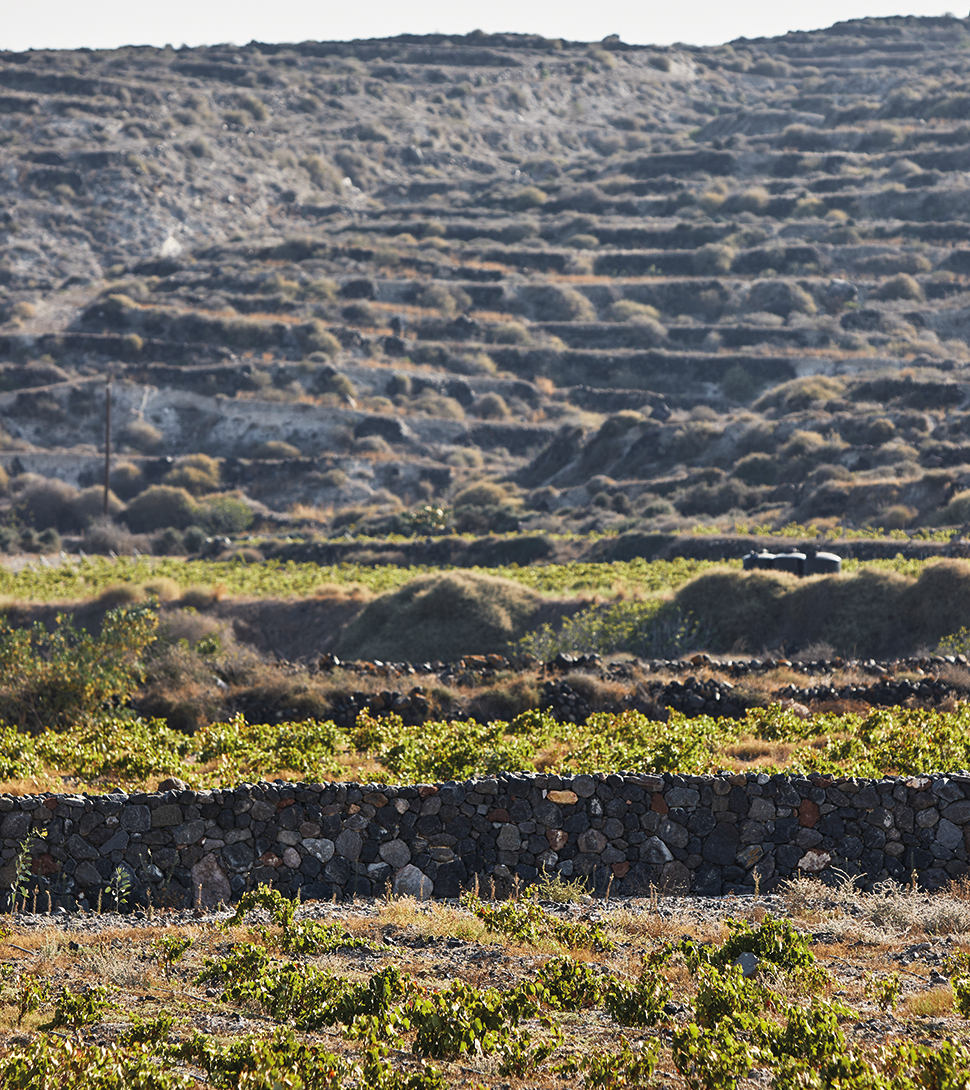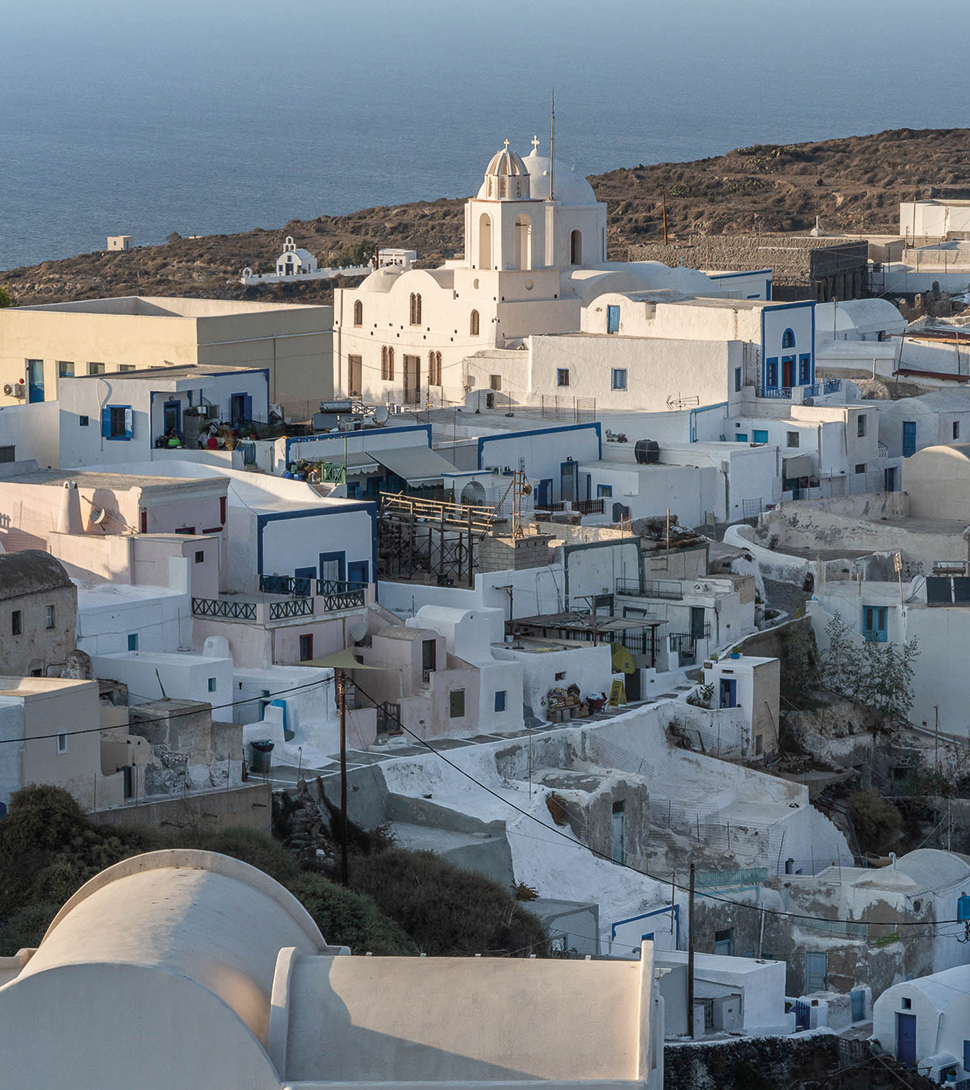
THΕRASSIA
Today’s Therassia is an island in its own right: oblong in shape, 8km long and 2.5km wide. Its total land surface is about 9.3 square kilometres.
The famous Greek historian Pliny mentions that in 237 BC Therassia was detached from Santorini after an earthquake. When still part of Santorini, then known as Strongili (circular), Therassia stretched from Akrotiri to Aspronisi. Testimonial to its prehistoric past are the island’s 172,000 year old ancient rocks which are located in the area of Cape Simantiri.
The island is topographically divided into three different zones on a sloping terrain that starts from the western and lower elevations and ascends through deep gorges to the caldera.
Kept in place by drystone walls, the topsoil contains to this day the thin layer of volcanic ashes of the Minoan eruption. This indicates that the soil is in a stable state, which is the case thanks to manmade rows of terraces that proved a successful system to make the flat plateaus ideal for cultivation.


The extensive scattering of ancient pottery also contributes to the stability of the soil. As sherds of broken vessels and stones mix with manure when it is carted away to fertilise vineyards, soils with high moisture retention capacities that are ideal for viticulture are established.
Today, the main villages of the island are Manolas, Potamos, the seasonal settlement of Riva, the semi-abandoned Agrilia and the abandoned Kera.
The first excavations in the prehistoric Aegean took place in Therassia because of the place’s apparent eternal and timeless character. Yet only a few historical references to the island itself have been documented.
This is due to its history an ‘appendage’ to Santorini, which was for long known by a very similar name: Thera. On older surviving maps Therassia is also listed as Terasia or Tiressia, and it has always been the ‘small one’ compared to the great Thera with which it shares a common development and habitation history.
From the sixties onwards, the tourism industry started to develop in Santorini but in Therassia time froze. In fact, the island still resembles a miniature of what Thera used to be several years ago. Therassia’s villages remain surrounded by the ‘aura’ of the past, waiting to be explored.
Thus, the land that was referred to as ‘Little Thira’ by Constantine Porphyrogenitus (10th century), remains in suspended animation between inertia and nostalgia to this day.
- Explore Manolas, the capital of Therassia
- Walk in Agrilia, a semi-abandoned village
- Visit Kera, one of the architectural and historical sights of the island.
- Go to the Monastery of the Assumption of the Virgin Mary at Cape Tripiti.
- Swim at Riva beach.
- Have coffee and savour local flavours in Riva and the port of Korfos.

